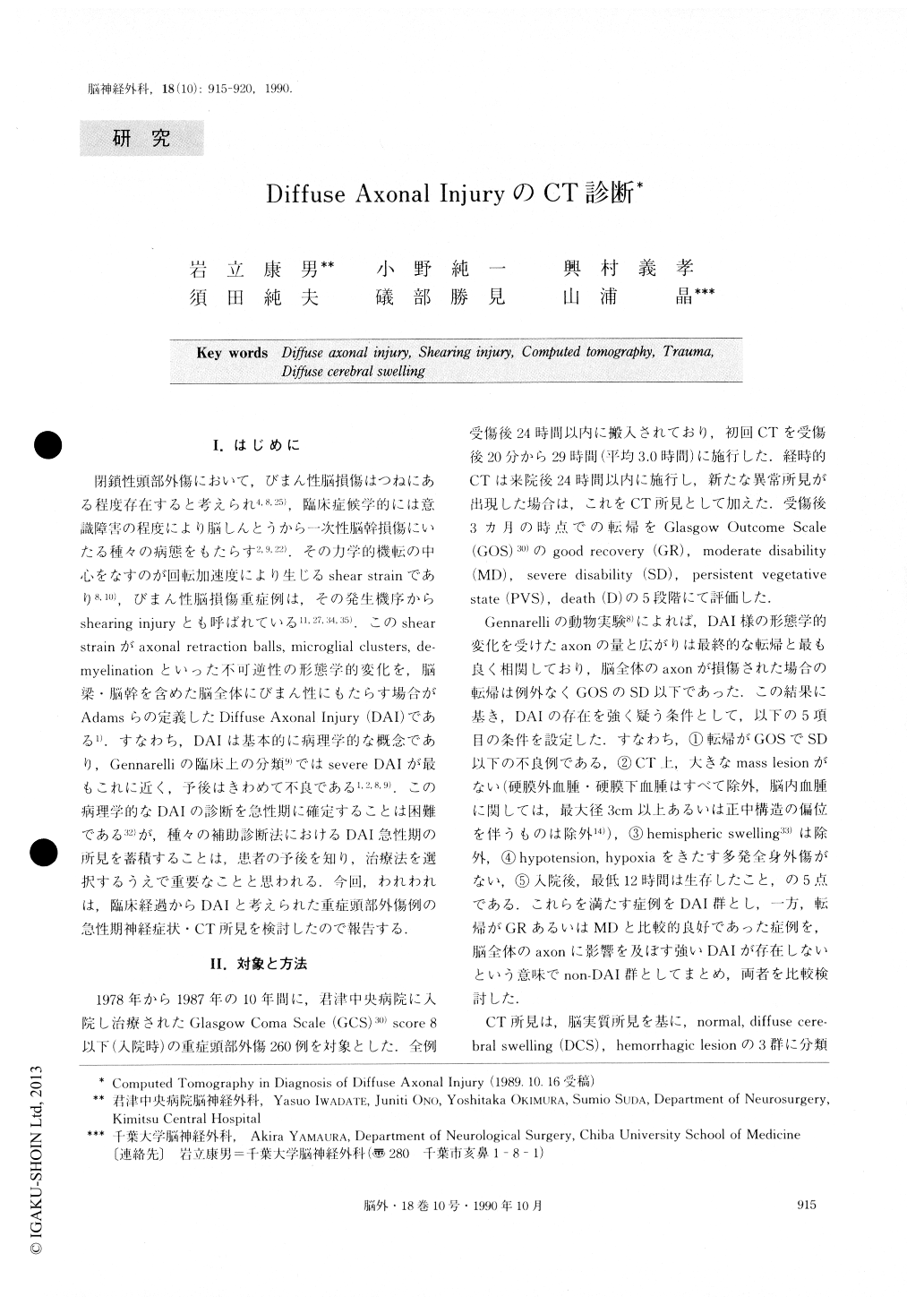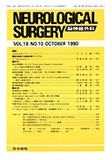Japanese
English
- 有料閲覧
- Abstract 文献概要
- 1ページ目 Look Inside
I.はじめに
閉鎖性頭部外傷において,びまん性脳損傷はつねにある程度存在すると考えられ4,8,25),臨床症候学的には意識障害の程度により脳しんとうから一次性脳幹損傷にいたる種々の病態をもたらす2,9,22).その力学的機転の中心をなすのが回転加速度により生じるshear strainであり8,10),びまん性脳損傷重症例は,その発生機序からshearing injuryとも呼ばれている11,27,34,35).このshearstrainがaxonal retraction balls, microglial clusters, de—myelinationといった不可逆性の形態学的変化を,脳梁・脳幹を含めた脳全体にびまん性にもたらす場合がAdamsらの定義したDiffuse Axonal Injury(DAI)である1),すなわち,DAIは基本的に病理学的な概念であり,Gennarelliの臨床上の分類9)ではsevere DAIが最もこれに近く,予後はきわめて不良である1,2,8,9).
Diffuse axonal injury (DAI) has been described in in-stances of prolonged traumatic coma on the basis of the neuropathological findings, but the same findings are also found in patients with cerebral concussion. Ex-perimental studies confirm that the quality of survivors following trauma is directly proportional to the amount of primarily injured-axon. When the injured axon lies in a widespread area of the brain, outcome for the patient is always poor. In a series of 260 severely head-injured patients, based on their poor outcome, 69 (27%) were diagnosed as DAI.

Copyright © 1990, Igaku-Shoin Ltd. All rights reserved.


